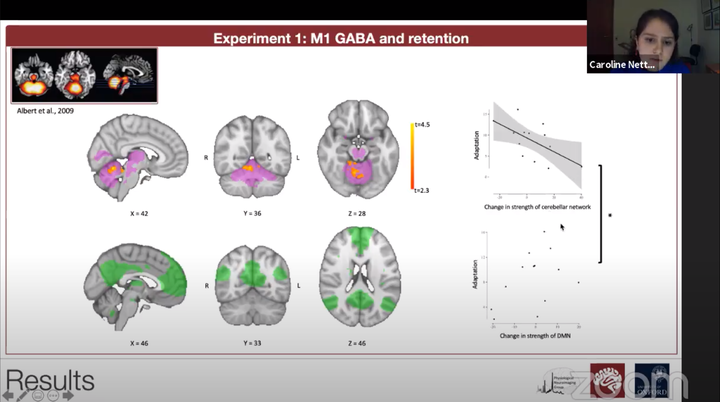The role of M1 GABA in retention
 Image credit: Youtube
Image credit: YoutubeAbstract
Interacting with our ever-changing physical environment requires continual recalibration of the motor system. One mechanism by which this occurs is motor adaptation. Understanding how motor adaptation is implemented by the human brain, how different regions work in concert to retain adaptive movement accuracy, and how this function is linked to metabolic use of neurochemicals poses an important challenge in neuroscience. In humans, motor sequence learning is related to concentration of γ-aminobutyric acid (GABA) in the primary motor cortex (M1). However, the role of M1 GABA in adaptation - where behaviour is acquired outside M1, but retained within M1 - is unclear. Here, we used an ultra-high field MR multimodal acquisition to address the hypothesis that M1 GABA and M1-Cerebellar functional connectivity would relate to retention of adaptation, but not acquisition of adaptation. As such, we demonstrate higher baseline M1 [GABA] relates to greater retention of adaptation but does not relate to adaptation-acquisition. This relationship is mediated by change in M1-Cerebellar functional connectivity: higher M1 [GABA] relates to a decrease in M1-Cerebellar connectivity, resulting in greater retention. These findings showed anatomical, neurochemical and behavioural specificity: As expected, no relationship was found between retention and a control metabolite, as well as retention and connectivity change between control regions and no relationship was found between M1 [GABA] and behaviour in a control condition. The implication of a mechanistic link from neurochemistry to retention significantly advances our understanding of population variability in retention behaviour and provides a crucial step towards developing therapeutic interventions to restore motor abilities.